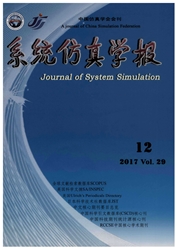

 中文摘要:
中文摘要:
虚拟脊柱手术仿真的挑战和难点之一,在于脊柱的几何非线性大变形的实时仿真。研究采用基于模态分析的模型约减方法,通过,毒绒预计算和实时交互仿真,来获得高刷新率的虚拟脊在的实时仿真。在离线的预计算阶段,对脊柱有限元模型进行模态分析,截取低频模态,得到约减的形变子空间,从而大大减少了动力学方程的系统自由度。在实时仿真阶段,在约减子空间中对脊柱动力学模型进行数值积分仿真,并将约减的形变向量重建到原始空间,从而实现脊柱模型实时仿真的快速刷新。实验数据表明,基于模型约减的虚拟脊柱能以非常高的刷新率进行实时仿真。
 英文摘要:
英文摘要:
Simulation of geometrically nonlinear large deformation of spine at high updating rates is the primary challenge and prerequisite for the implementation of virtual spine surgery. Modal analysis and model reduction techniques were introduced to process large deformation of virtual spine to achieve the high updating rates. The simulation consists of two phases, the offline pre-computation and the online real-time interaction. In offline pre-computation, modal analysis was employed to process the finite element model and only low frequency modes were retained to construct the reduced subspace. Then, in real-time interaction, implicit Newmark integration scheme was adopted to simulate the virtual spine in reduced subspace and the reduced deformation vector was converted back into original Cartesian coordinates. Numerical experiments show that spine simulation based on model reduction could run at very high updating rates with reasonable precision. In conclusion, the deformable models of spine have the advantage of high updating rates and limited loss of accuracy and therefore could be useful in virtual spine surgery and relevant haptic applications.
 同期刊论文项目
同期刊论文项目
 同项目期刊论文
同项目期刊论文
 期刊信息
期刊信息
